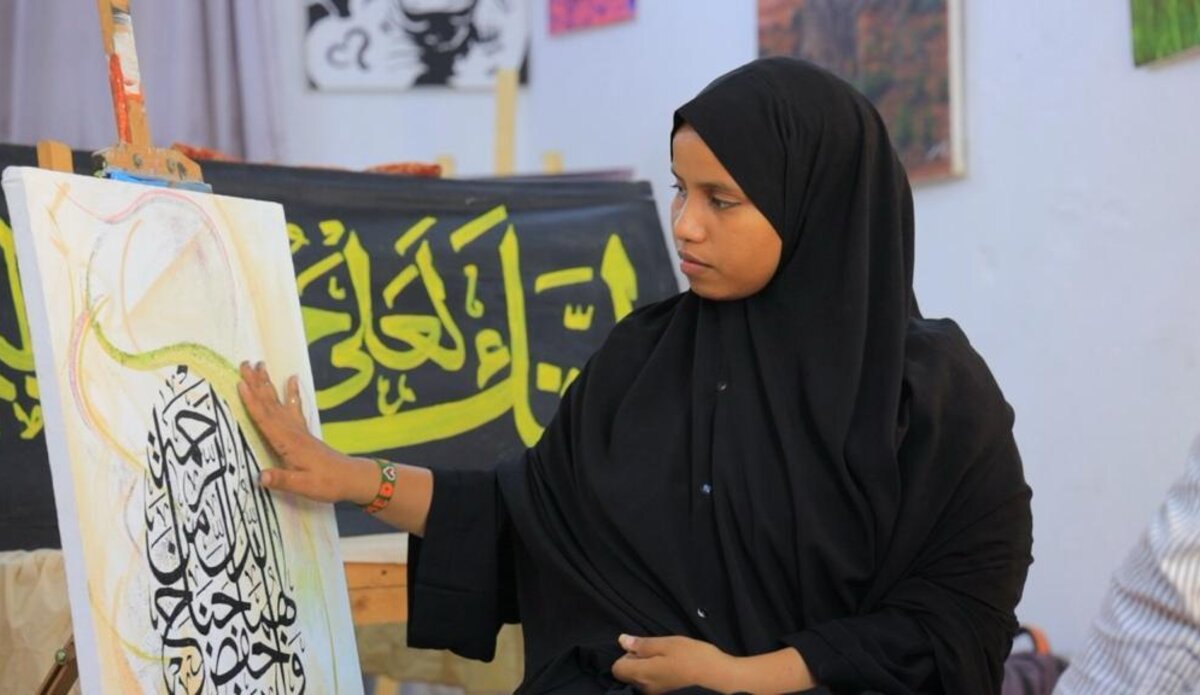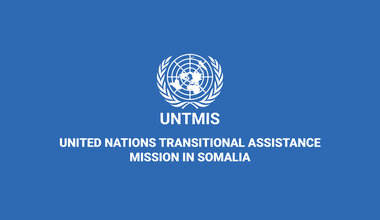Sana Ashraf Sharif Muhsin: Using art to make a difference
Mogadishu - Over the past few years, after decades of civil strife and conflict, which focused attention elsewhere, Somalia’s arts sector has been quietly progressing.
The reopening of the National Museum and the National Theatre in 2020 were key steps in this process. They have helped transform Mogadishu into a vibrant hub for Somali artists to showcase their talents.
Among the artists who have gained recognition during this rebirth is Sana Ashraf Sharif Muhsin, a young female artist.
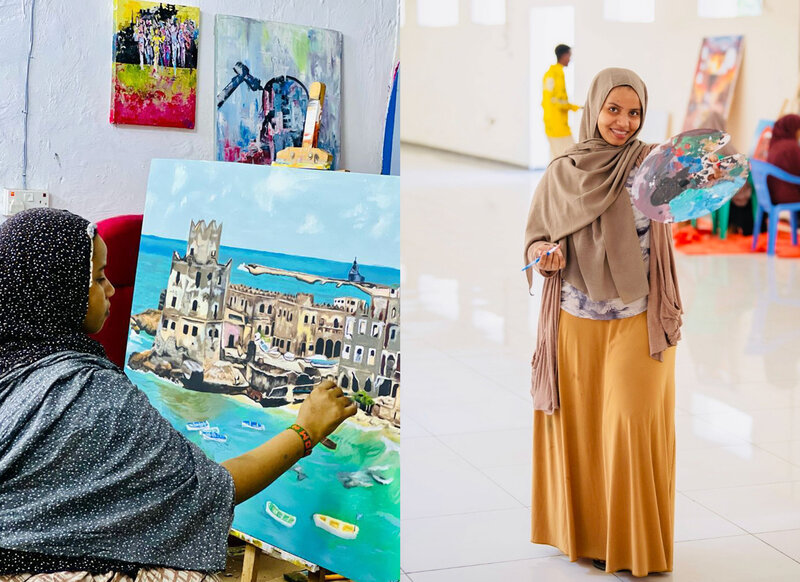
Early years
Born in Mogadishu in 2000, Ms. Muhsin showed a particular enthusiasm for art early on.
She began her education in 2007 at Mogadishu Primary and Secondary School in Shibis District. She followed this with tertiary study at Hormuud University in Mogadishu.
In 2022, Ms. Muhsin graduated - albeit in her second choice in terms of area of study, with a bachelor's degree in civil engineering.
Her preferred choice would have been a fine arts degree.
“There were no arts or creative schools in Mogadishu,” Ms. Muhsin says. “Art was my passion, and I wanted to widen my horizons within the field. Civil engineering was my second choice, and, ultimately, what I resorted to.”
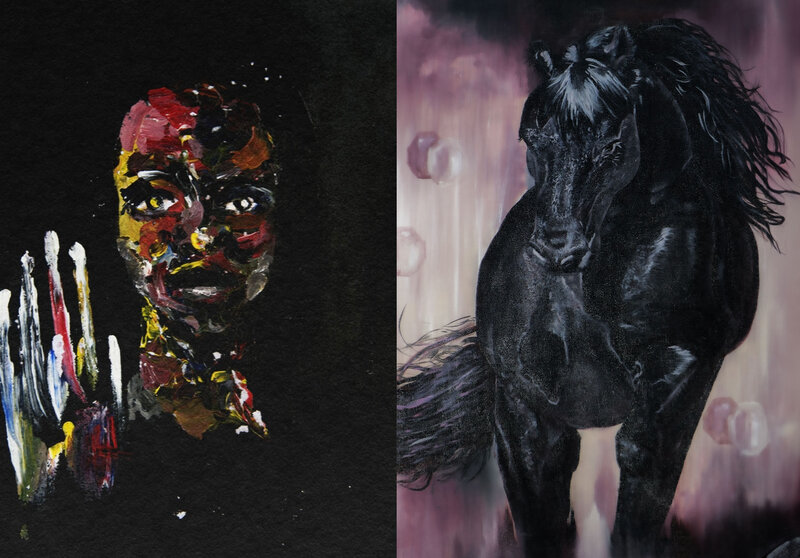
Seeing her art ambitions as out of reach, she threw herself into her engineering studies and kindled her interest into a passion.
“I interned at the Buruuj Construction and Real Estate Company, owned by Hormuud Telecommunication,” Ms. Muhsin recalls. “I worked as a site engineer, gaining insights into the fundamentals of construction and honing my supervision skills.”
Upon graduation, she had high hopes for paid employment in the sector - although she was also aware of the challenges involved.
Some parts of Somali society could be critical of women embarking upon careers in fields considered to be for men only, such as engineering, law and medicine.
Ms. Muhsin recalls incidents from her student days as an example.
“Whenever I rode a bajaj (a three-wheeled motorcycle), drivers asked me what I am studying at university,” Ms. Muhsin explains. “When I said engineering, some asked me questions like, ‘Can you carry heavy loads? Can you climb high-rise buildings?’”
Sadly, her efforts were in vain. The aspiring engineer was unable to find a paying job in her field of study.
But, while initially dejected, Ms. Muhsin came to see it as a case of one door closing and another opening.
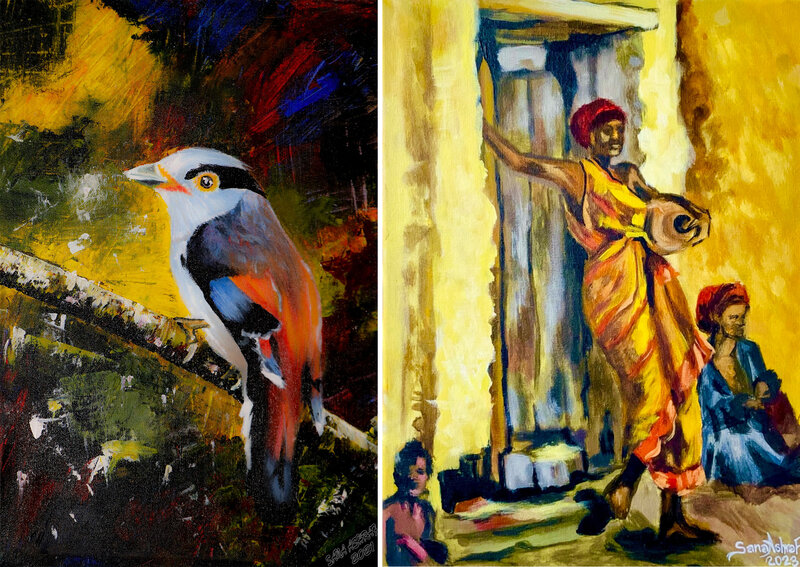
Shift to art
As a young child, Ms. Muhsin had developed a passion for drawing. From the age of eight, her late uncle and well-known Somali artist, Abidkarim Osman Adow, nurtured her talent.
“He showed me how to sketch, illustrate, and draw. With his guidance, I acquired the skills necessary to draw everything from portraits to lions,” she says.
Her beloved uncle and mentor, who played a pivotal role in her artistic development, passed away in 2013. But his teachings and encouragement stayed with her.
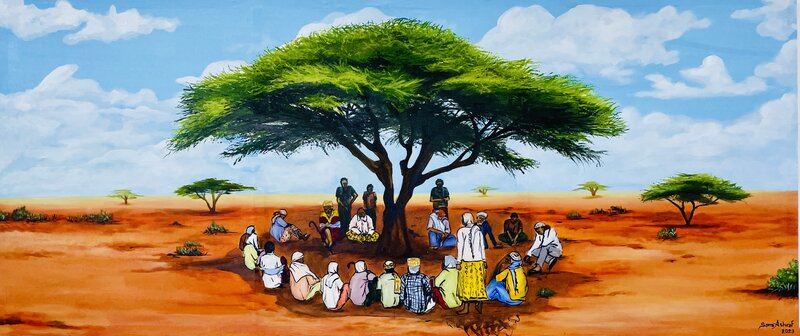
Ms. Muhsin’s artistic talent continued to develop and draw attention. Her teachers in primary and secondary school recognised her gift and also encouraged her artistic side to flourish.
“I used to doodle in my school notebooks. A teacher in first and second grade noticed my talent and encouraged me to draw for other pupils on the blackboard. I used to sketch all kinds of animals and everyday items like cups and plates for them,” she recalls.
Using art as a tool for social change
Focusing on her art now, Ms. Muhsin also sees its power as a tool for social change.
“I use art to address societal issues such as gender equality or to influence people to take action or explore different perspectives, like in my painting featuring a female bajaj (three-wheeled) motorcycle,” she says.
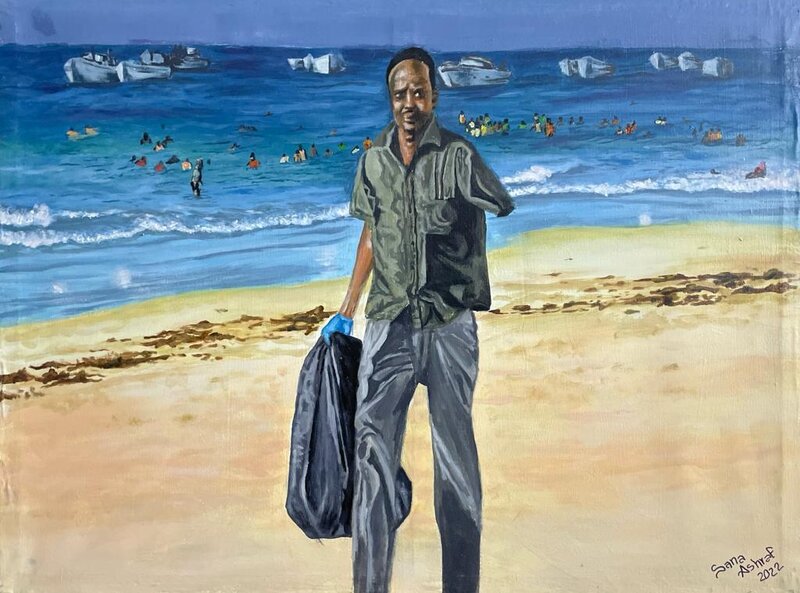
Ms. Muhsin’s artwork has drawn much interest from the news media as well as via social media platforms.
But being an artist in Somalia is no easy feat in an under-resourced arts and culture sector, especially for female artists.
“The challenges range from financial constraints due to the high cost of painting materials to societal obstacles, where everyday objects are considered inappropriate subjects by religious scholars,” Ms. Muhsin notes.
A dearth of arts associations and interest groups also prevents Somali artists from speaking in a united voice.
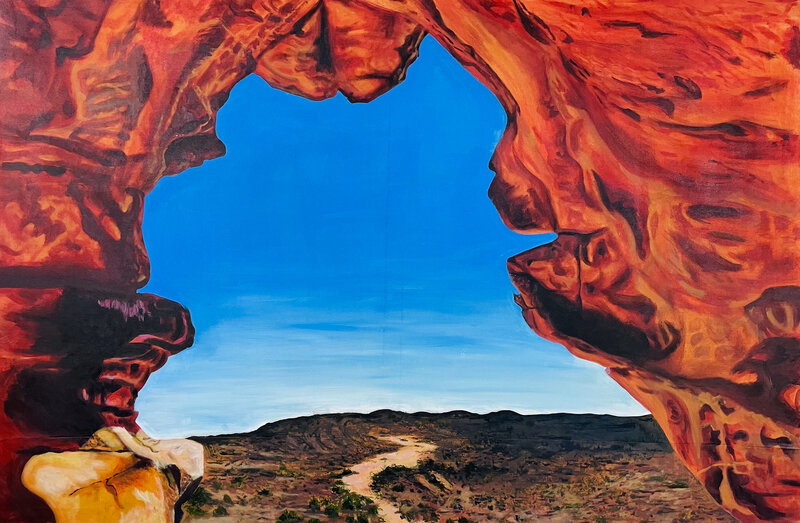
“Professional artists face a unique set of challenges, notably the absence of supportive associations advocating for their rights. The absence of such organisations leaves artists vulnerable, lacking a collective entity to safeguard their interests,” Ms. Muhsin says.
She appeals to the government and international partners for support.
“The artist's profession often lacks the recognition it truly deserves,” Ms. Muhsin says.
“Artists have the potential to flourish in Somalia,” she continues. “Governments and partners should offer talented individuals opportunities such as scholarships and exhibition opportunities.”
Digital media and arts
Ms. Muhsin has been able to carve out a niche for herself in the arts sector.
She and her work have been featured in various news media outlets. Interviews with her have appeared on the British Broadcasting Corporation (BBC), Voice of America (VOA), Associated Press (AP), China Global Television Network (CGTN), Al-Arabiya, as well as on local channels, such as Somali National Television (SNTV), Shabelle, Astaan Media and Radio Himilo.
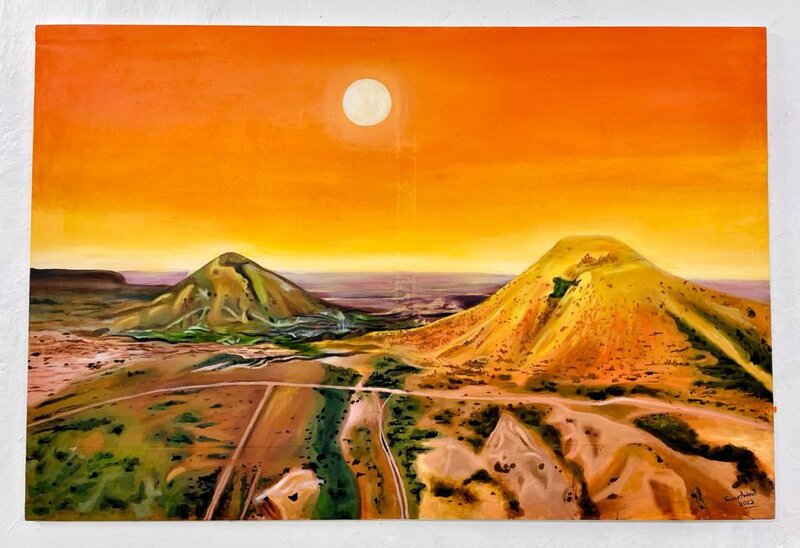
But it is on social media where Ms. Muhsin has particularly shone.
She is active on X (formerly Twitter), Facebook, and Instagram, and has built an impressive following on these channels, garnering thousands of followers.
“Many people purchase my art through social media. When they see me doing paintings on Facebook Live or on Instagram Reels, they message me, expressing their interest in that piece or asking whether I can create new ones for them. It is a great marketing tool for me,” she says. “And social media is global, so I get Somalis from all over the world purchasing my art,” she says.
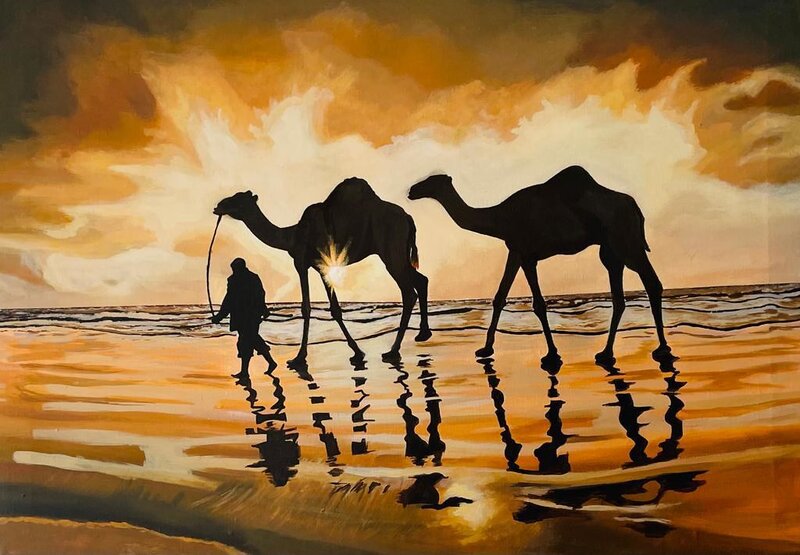
Motivation for female artists
In Somalia, where few female artists are publicly active, the thriving artist believes it is crucial to recognise and celebrate their presence in the local artistic landscape.
Ms. Muhsin has words of encouragement for fellow female artists, “If you love art, commit to it wholeheartedly and face the challenges head-on. Art not only allows for self-expression but also presents a viable opportunity to generate income.”
She suggests that female artists explore the opportunities available to them online - embracing social media and mastering the diversity of modern tools for painting and drawing.
“Using digital media will showcase your talents. It is a powerful tool,” she notes.
Promoting rights through art
The United Nations recognises the vital role of arts and culture in promoting peace, social cohesion and development in Somalia.
The United Nations Educational, Scientific and Cultural Organization (UNESCO) has stated that art nurtures creativity, innovation and cultural diversity for all peoples across the globe and plays an important role in sharing knowledge and encouraging curiosity and dialogue. In this way, furthering the development of art also furthers our means to achieve a free and peaceful world.
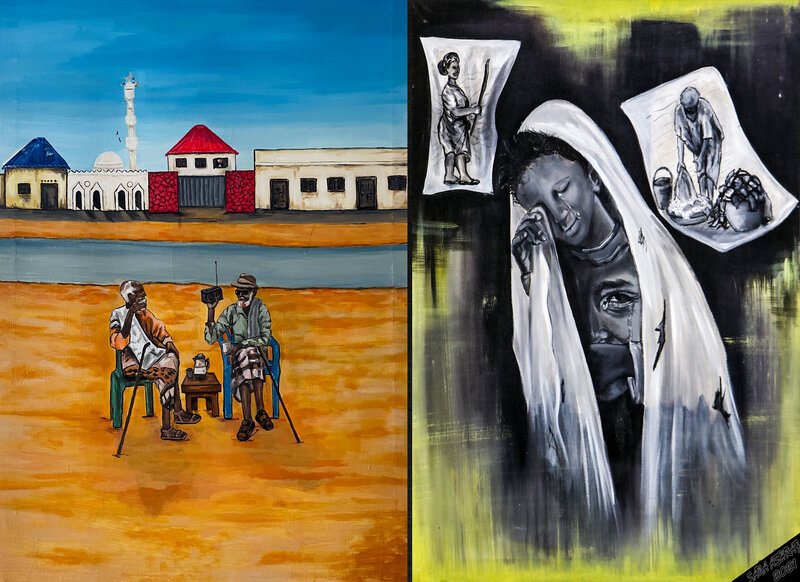
In November this year, the UN supported artists in Somalia by organising the country’s first-ever human rights art competition, in collaboration with the National Museum of Somalia.
The competition sought to raise awareness about human rights and foster dialogue and debate on issues of importance to Somalis. The UN also provided training to the shortlisted entrants on key human rights concepts and themes, as part of the UN’s activities to commemorate the 75th anniversary of the Universal Declaration of Human Rights.
 UN
UN
